Geography and History 2. Social sciences
1. Islam and Al-Andalus
2. Feudal Europe
3. Medieval Cities
4. The Formation and Expansion of The Peninsular Kingdoms
5. The Great Peninsular Kingdoms
G. Glossary
6. The Renaissance and The Reformation
7. Absolute Monarchy: The Catholic Monarchs
8. The Great Geographical Discoveries
9. The Habsburg Dynasty
10. The Baroque Age
G. Glossary
11. The Earth's Population
12. The Population of Spain
13. Cities and Urban Areas
14. [...]
Este libro contiene:
-
17 secuencias
-
929 recursos
-
Idioma:
- Inglés
Libro de texto
-
1. Islam and Al-Andalus
- Ir a ficha de secuencia
- 0 secuencias
- 70 recursos
Islam, like Judaism and Christianity, is a monotheistic religion that believes in one god. The Prophet Muhammad preached this religion during the 7th century in Arabia. After the Prophet’s death, his followers began to spread Islam across Asia, North Africa and parts of Europe. The Muslims arrived on the Iberian Peninsula in 711. They defeated the Visigoth kingdoms and created the Islamic state, Al-Andalus. [...]
-
2. Feudal Europe
- Ir a ficha de secuencia
- 0 secuencias
- 79 recursos
In the Middle Ages a new political, economic and social system appeared in western Europe: feudalism. The monarch gave land (fiefdoms) to nobles and clergy to govern in his name. In return, they became the king's vassals. They had to swear loyalty to the king and help him in his military campaigns. The population was mostly made up of peasants. Many of these became the noble's serfs in exchange for his protection.
-
3. Medieval Cities
- Ir a ficha de secuencia
- 0 secuencias
- 73 recursos
In the 12th and 13th centuries, a period of economic growth led to the rebirth of cities. Cities became important centres of artisan activity and trade. Palaces, cathedrals and markets were built in the cities, which were protected by walls. Gothic architecture, sculpture and painting dominated. A new social class appeared called the bourgeoisie. It was made up of traders, artisans and bankers. [...]
-
4. The Formation and Expansion of The Peninsular Kingdoms
- Ir a ficha de secuencia
- 0 secuencias
- 72 recursos
In the 8th century, the majority of the Iberian Peninsula was occupied by Muslims, who had created the kingdom of Al-Andalus. In the Cordillera Cantábrica, a small group of Christians survived the Muslim conquests and established the Kingdom of Asturias. In the Pyrenees, the group of counties known as the Marca Hispánica gained independence from Frankish rule. [...]
-
5. The Great Peninsular Kingdoms
- Ir a ficha de secuencia
- 0 secuencias
- 60 recursos
During the 12th and 13th centuries, the Christian kingdoms on the Iberian Peninsula (Portugal, Castile and Leon, Navarre and the Crown of Aragon) became more powerful. These kingdoms extended their power by conquering Muslim territory. In Castile, the economy was based on wool and the nobles had great social influence. At the same time, the Crown of Aragon became an important centre of trade with a powerful bourgeoisie. [...]
-
6. Glossary
- Ir a ficha de secuencia
- 0 secuencias
- 5 recursos
Caliph (n): a Muslim ruler with complete political and religious authority. dome (n): a round decorative roof of a building with a circular base. emir (n): a Muslim (usually Arab) leader or military commander. imam (n): an Islamic religious leader who directs worship in a mosque. minaret (n): a tall, thin tower of a mosque, with a balcony at the top from which Muslims are called to prayer. [...]
-
7. The Renaissance and The Reformation
- Ir a ficha de secuencia
- 0 secuencias
- 68 recursos
The Renaissance and the Reformation In the 15th and 16th centuries, a new way of understanding the world developed, called Humanism. Humanism focused on human values and looked back to the classical cultures of Greece and Rome. This change in thought led to a new cultural movement based on classical secular art called the Renaissance. During this period, people began to criticise the corruption and abuses of the Catholic Church. [...]
-
8. Absolute Monarchy: The Catholic Monarchs
- Ir a ficha de secuencia
- 0 secuencias
- 64 recursos
The 15th century marked the end of the Middle Ages and the beginning of the Modern Age. The Modern Age saw economic and population growth. There was also an increase in artisan activity and the circulation of money. The rule of the Catholic Monarchs replaced the feudal system, and they established an absolute monarchy. The Catholic Monarchs also unified most of the territories on the Peninsula.
-
9. The Great Geographical Discoveries
- Ir a ficha de secuencia
- 0 secuencias
- 65 recursos
At the end of the 15th century, technical advances allowed Europeans to go on maritime expeditions to discover new trade routes. As well as the African coast and the Spice Islands, explorers discovered the continent of America and made the first voyage around the world. European civilisations expanded to all the continents, creating large colonial empires. In America, the Spanish and Portuguese conquered the indigenous civilisations. [...]
-
10. The Habsburg Dynasty
- Ir a ficha de secuencia
- 0 secuencias
- 68 recursos
Charles I came to the throne at the beginning of the 16th century. He was the first king of Spain from the Habsburg dynasty. He and his son, Philip II, governed an extensive empire of territories in Europe and America. Although these kings dominated Europe, they were constantly involved in conflicts and wars. In the 17th century, under Philip III, Philip IV and Charles II, the Empire went into decline. [...]
-
11. The Baroque Age
- Ir a ficha de secuencia
- 0 secuencias
- 57 recursos
The 17th century was a period of contrasts in Europe. There were demographic problems and a crisis in agricultural production. However, at the same time new trade routes were established and manufacturingwas developed. The nobility and clergy maintained their power, but the influence of the bourgeoisie grew. Absolute monarchies appeared across Europe. Baroque became the predominant style in architecture, sculpture and painting. [...]
-
12. Glossary
- Ir a ficha de secuencia
- 0 secuencias
- 5 recursos
Catholic (n): a member of the Christian church under the authority of the Pope in Rome. courtier (n): a member of the royal court who gave advice or companionship to the monarch. doctrine (n): a set of beliefs taught by a religion or political party. dogma (n): a set of principles established as undeniably true by a religious or political authority. [...]
-
13. The Earth's Population
- Ir a ficha de secuencia
- 0 secuencias
- 63 recursos
The science that studies population is called demography. Demography analyses the size, structure and distribution of populations. It is also concerned with changes that affect populations over time due to factors such as birth rate, mortality rate and migrations. [...]
-
14. The Population of Spain
- Ir a ficha de secuencia
- 0 secuencias
- 63 recursos
Spain is not densely populated compared to other European countries. However, in the 20th century the population began to grow. The major changes in Spain's population in recent decades have been caused by a decrease in the birth rate and mortality rate, a rise in life expectancy, an increase in the urban population and large-scale immigration. During the same period, there have been lots of social changes. [...]
-
15. Cities and Urban Areas
- Ir a ficha de secuencia
- 0 secuencias
- 56 recursos
Cities are densely populated areas and centres of many economic and social activities. The areas where cities are located define their shape, size and environmental and cultural characteristics. The continuing growth of urban areas, or urbanisation, means that today there are more people in the world living in towns and cities than in the countryside.
-
16. Human Societies
- Ir a ficha de secuencia
- 0 secuencias
- 57 recursos
The organisation of human societies is based on many factors, such as economy, politics, culture, history, religion, values and also the level of technological development. Over time, traditional societies based on agriculture have evolved into modern societies, and later into postmodern societies with extensive service sectors. One of the major characteristics of human societies today is their diversity due to factors such as immigration.
-
17. Glossary
- Ir a ficha de secuencia
- 0 secuencias
- 4 recursos
Active population (n): the part of the population that is of working age. aging population (n): when the average age of the population increases. This happens when people live longer and have fewer children. birth rate (n): the number of births in a population in a year. census (n): the official count of the population that also records certain details about individuals. [...]
-
Aún no hay comentarios, ¡comparte tu opinión! Inicia sesión o Únete a Tiching para poder comentar
La licencia digital es una autorización que permite utilizar un recurso digital de acuerdo con las condiciones legales de dicho recurso. El código que recibas una vez la hayas comprado te permitirá acceder al recurso educativo digital elegido.
Puedes consultar más información en nuestra página de ayuda.






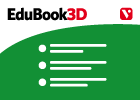
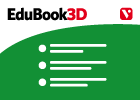
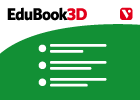




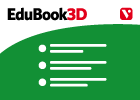


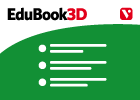


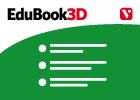

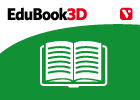
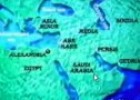
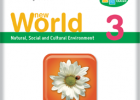



¿Dónde quieres compartirlo?
¿Quieres copiar el enlace?